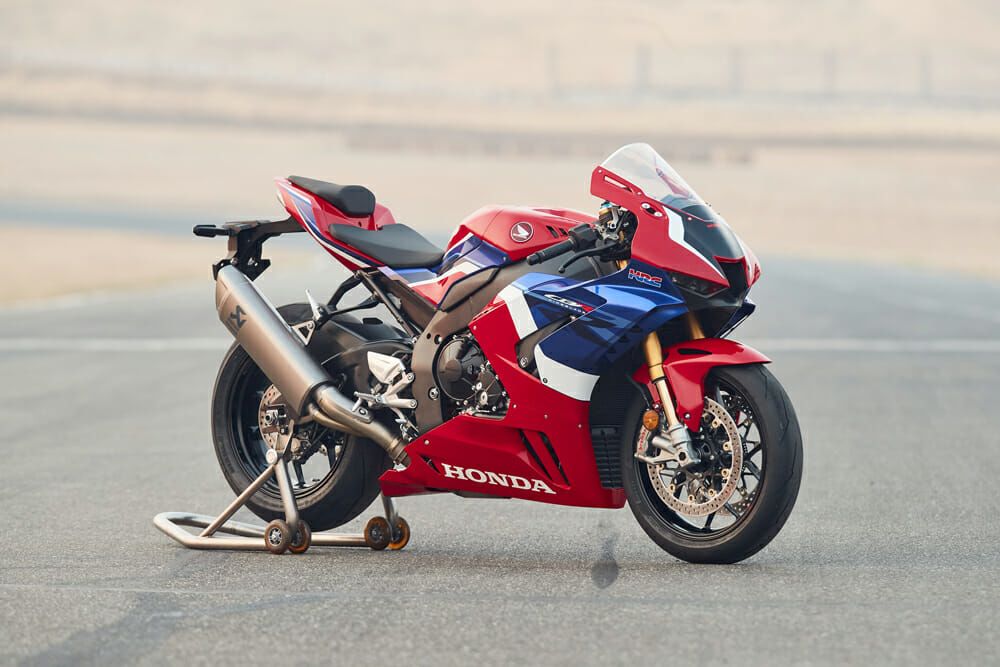Honda CBR1000RR-R Fireblade SP
Overview
Honda have opened a brilliant new chapter in its Fireblade history. This CBR-1000RR-R SP is an overwhelming success and should make for some interesting head-to-head tests alongside the Ducati Panigale V4S and BMW’s S1000RR. Throw in the R1M and RSV4 1100 Factory too and, despite the lowly sales figures for such machines, we are blessed to be in a golden era of outrageous sports bikes.
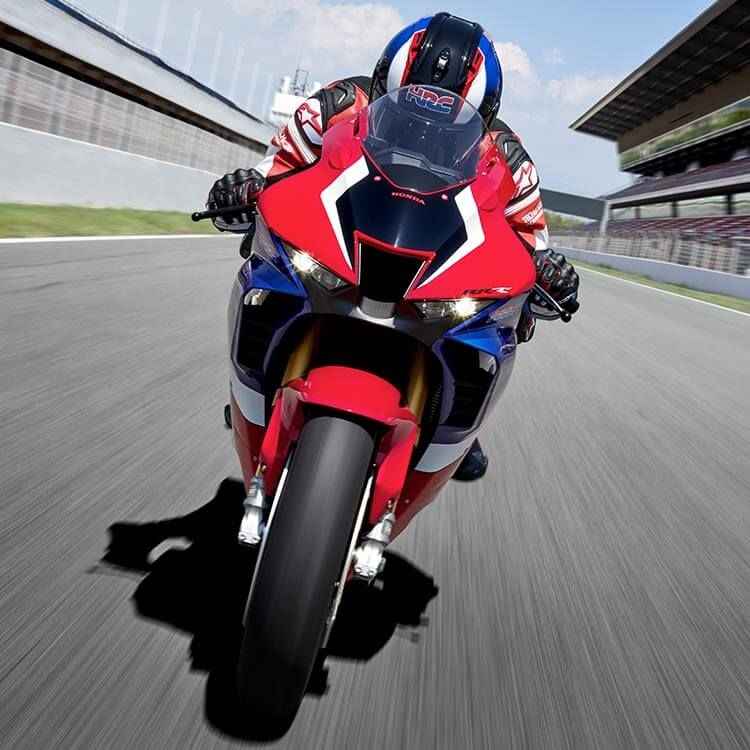
Power and torque
The claimed figures are barely believable from a company that gave us 189bhp from their new headline sports bike just 4 years ago. Fast forward to 2020 and 214.56bhp (160Kw) @ 14,500rpm represents a huge 13% increase, and what’s more, we’re looking at a 10bhp peak power advantage over any inline four-cylinder rival. Peak torque is 113Nm (83.35lbft) @ 12,500rpm.
Here’s a stat; the power-to-weight ratio of the 2020 Fireblade is 79.5% higher than the 1992 CBR900R. On paper, the motor is pure racing but chassis and electronics are more road-oriented. If you need your bike up at 10,000rpm before it feels like it’s working then the Sunday blast or trip to Tesco could be both fearsome and a little law-breaking. It’s not like a V4 nor does it variable valve timing.
Ishikawa was quick to recognise the importance of the HRC (Honda Racing Corporation) association with this project, “The involvement has been very strong especially on the engine technology. So, getting this new power figure from the engine is all thanks to the cooperation with the HRC guys, so that has been a big impact on the development,” he said. Interestingly, despite the power figure dominating all competitors, it wasn’t Honda’s original intention, with the Fireblade boss stating, “We did have a number at the start which is less than the number we ended up with!”
Compared to a Panigale or S1000RR, the new Honda is right up there. The throttle connection and power delivery is as smooth as a hot knife wrapped in silk through hot butter, and linear too, but it needs to be revved hard and high to get the most from the redeveloped motor. Looking at the dyno graph in the press pack and the 2020 model makes no more power than the 2017 bike below 11,000rpm but above that is where the motor keeps pulling hard until 14,500rpm peak power mark... it feels faster below 11k rpm than the graph suggests, perhaps that's down to the upgraded electronics, aero, suspension, etc. which make the bike seem quicker.
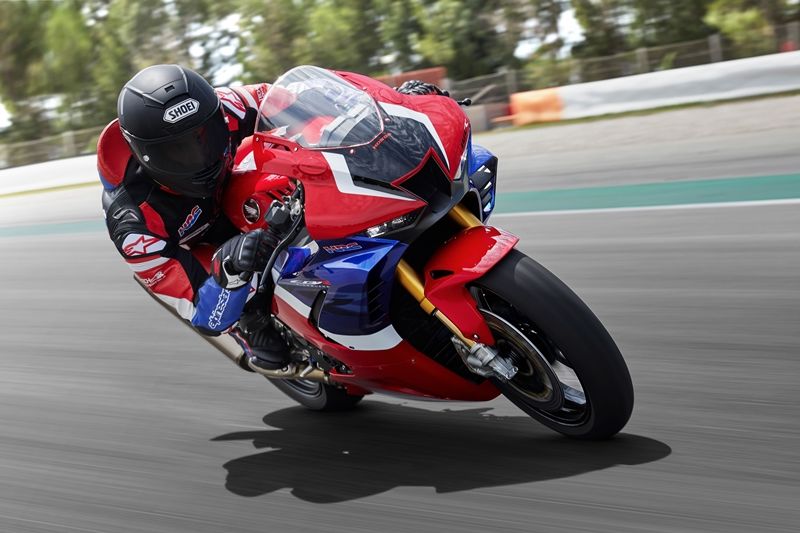
Engine, gearbox and exhaust
The 1000cc inline four-cylinder engine is completely new and designed with heavy input from the HRC MotoGP development program. The 2020 RR-R model has the same 81mm bore and 48.5mm stroke as the RC213V, an impressive increase over the 76 x 55.1mm of the previous design, and now the largest bore size of any inline four 1000cc motorbike. It also features a semi-cam gear train, finger-follower rocker arms, titanium con-rods, RC213V-S internal friction reduction technologies, piston jets with check ball system and a built-in bottom bypass passage for the cylinder water jacket.
A ram-air duct in the front fairing tip feeds through the headstock directly into the air box, thanks in part to the lack of ignition barrel which in turn is because the ignition is now keyless. The 4-2-1 exhaust downpipes are ovalised and the end-can has been developed in conjunction with Akrapovic. The new compact, lightweight titanium end can features a valve which helps to deliver low-rpm torque which then opens for high rpm power. It even reduces noise when closed.
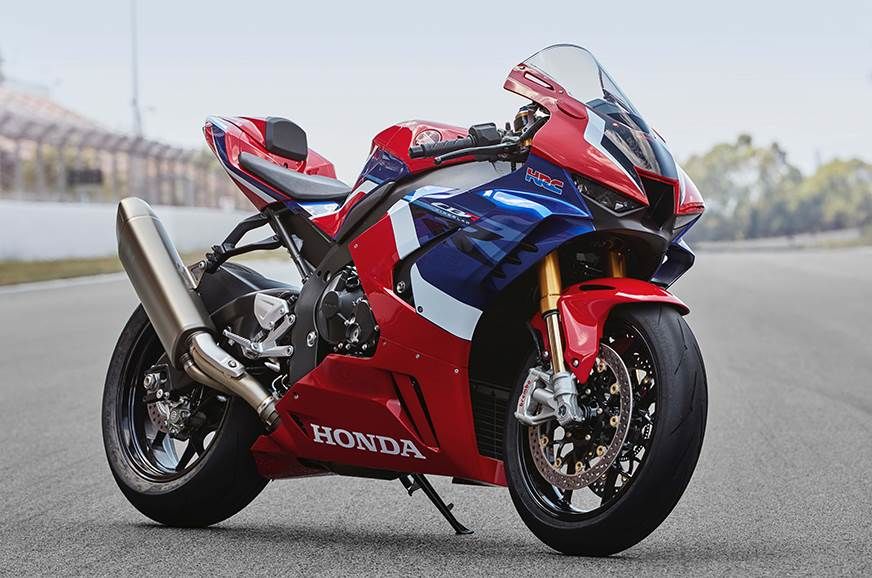
The valve train is driven by a new (patent pending) semi-cam gear train system. To drive such high-rpm/high-cam lift performance the chain is driven from the timing gear located on the crank shaft via the cam idle gear – this makes it shorter in length.
The smaller dimensions of the new engine, rather than a V4 layout, has allowed Honda to redesign the chassis for high speed steering, stability under braking and acceleration and front end feel/grip. And, for the first time since the late 90s, the rear of the engine block now acts as the upper shock mount.
Honda CBR1000RR-R Fireblade SP Economy
The claimed economy figure is 46.2mpg which, according to my maths, equates to a 160-mile range from the 16.1 litre tank. Although that’s hard to test when on track which has plenty of full throttle areas and while trying to a professional BSB rider in my sights.
Handling, Suspension and Weight
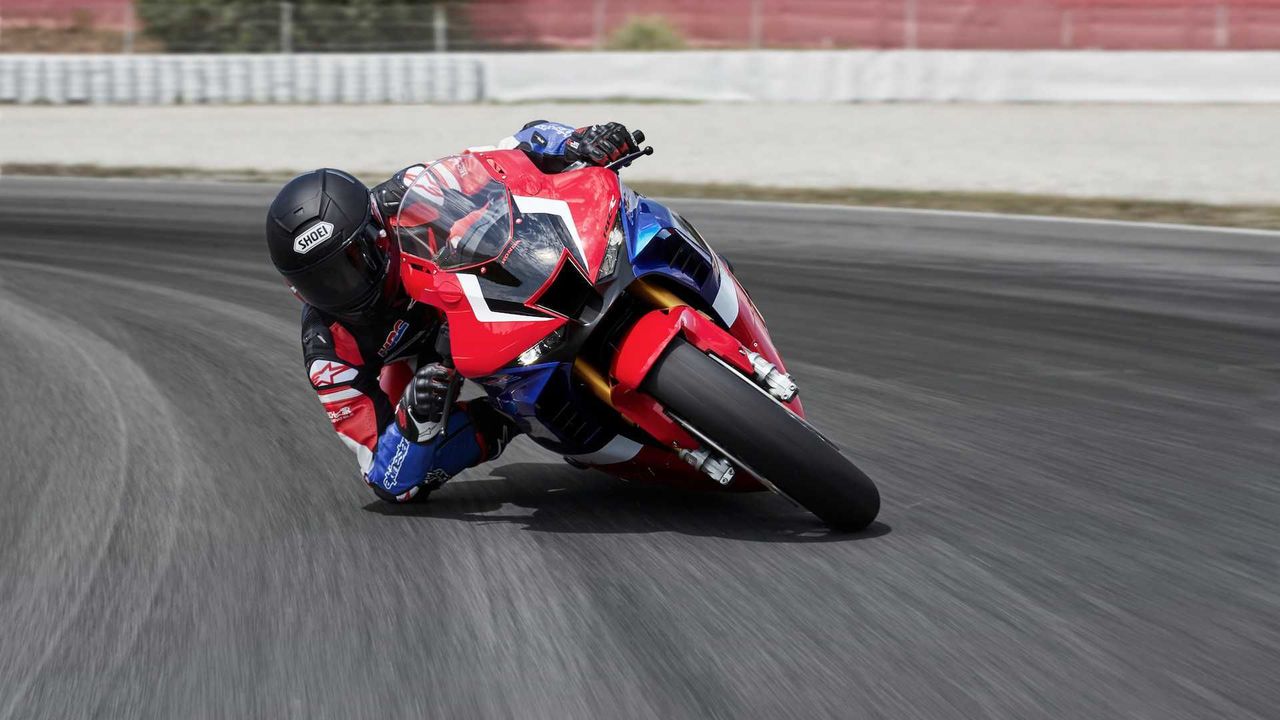
New aluminium frame and swing-arm change weight distribution, centre of gravity and rigidity balance for improved handling and traction. The reduction in physical size of the CBR1000RR-R SP’s engine opened up new packaging options around it for the new frame and swing-arm – with completely revised geometry. The diamond frame is made from 2mm aluminium with increase and decreased rigidity where appropriate.
The handlebars have been moved forwards. The footpegs further back by 43mm and higher by 21mm, while the new sub-frame bolts to the top of the frame, narrowing the area around where the rider wraps their legs. The increase of 5kg up to 201kg in wet weight over the outgoing bike is easily offset with the increase in power-to-weight ratio. The swingarm is 30.5mm to improve stability and control while the overall wheelbase increases by 50mm. Rake and trail also increase and seat height is up by 10mm to 830mm. Even the tank position has been lowered by 45mm
Ohlins 43mm NPX Smart EC2.0 forks now use pressurised damping and their 125mm stroke is up by 5mm. At the rear, the Ohlins twin tube TTX36 Smart EC Unit comes with a 10% longer stroke and the whole suspension can be fine tuned via the TFT display with three manual modes and three automatic modes with new algorithms. Unlike the 2017 model, the front and rear suspension can be separately changed. The automatic modes (A1, A2, A3) allow for alteration with front and rear stiffness plus braking, cornering and acceleration support – each via 10 settings (+5/-5). Whereas manual modes (M1, M2, M3) can be changed and stored with alterations to compression and rebound at the front and back all adjustable.
Honda CBR1000RR-R Fireblade SP Brakes
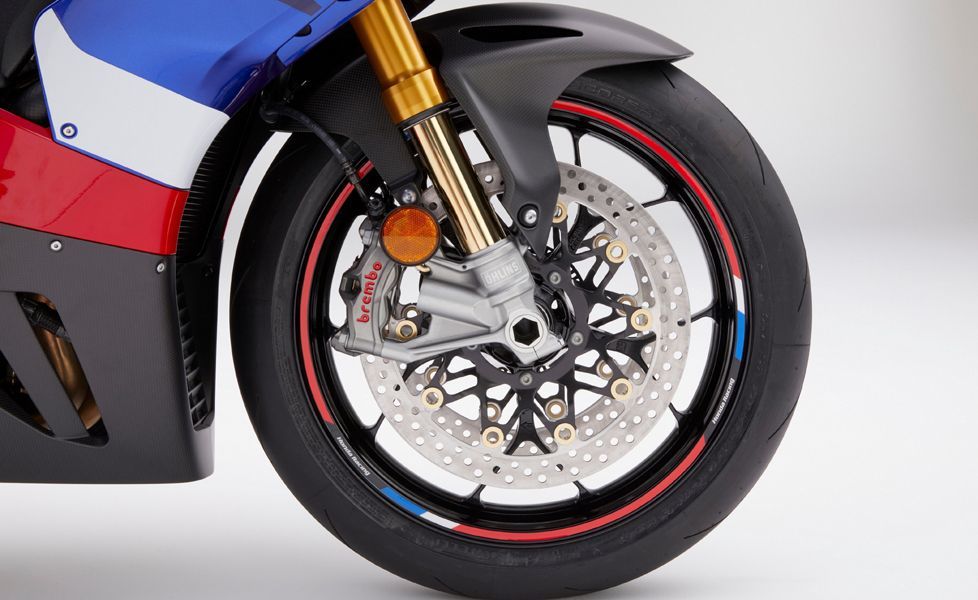
New Brembo Stylema four-piston radial mount brake calipers are operated by a Brembo master cylinder and brake lever. They now grip 10mm larger, 330mm diameter discs; the 5mm disc thickness also dissipates heat more efficiently. The rear brake caliper is the same Brembo unit used by the RC213V-S.
Rear lift control and ABS-managed brake force relative to lean angle were a feature of the previous design. For the CBR1000RR-R the system gains two switchable modes; SPORT mode focuses on road-riding performance, with high brake force and less pitching, while TRACK mode offers performance in braking from much higher circuit speeds.
Rider aids and electronics
Throttle-by-wire is optimised for faster response through a range of part throttle applications and improved feel. Three default riding modes plus options to customise Power (x5), Engine Brake (x3) and Wheelie control (x3 plus off). Honda Selectable Torque Control gains slip rate control for smooth torque management over 9 levels, plus off. Start Mode, aka launch control and quickshifter standard fitment.
A new 6-axis Bosch IMU is the brains behind the calculations of bike behaviour and is responsible for the torque control, wheelie control, cornering and rear-lift reducing ABS (two modes) as well as the electronic steering damper and the Ohlins suspension. The bike is also keyless with its ignition located on the left side of the head stock; push the button to switch her on and twist it to turn cut the ignition.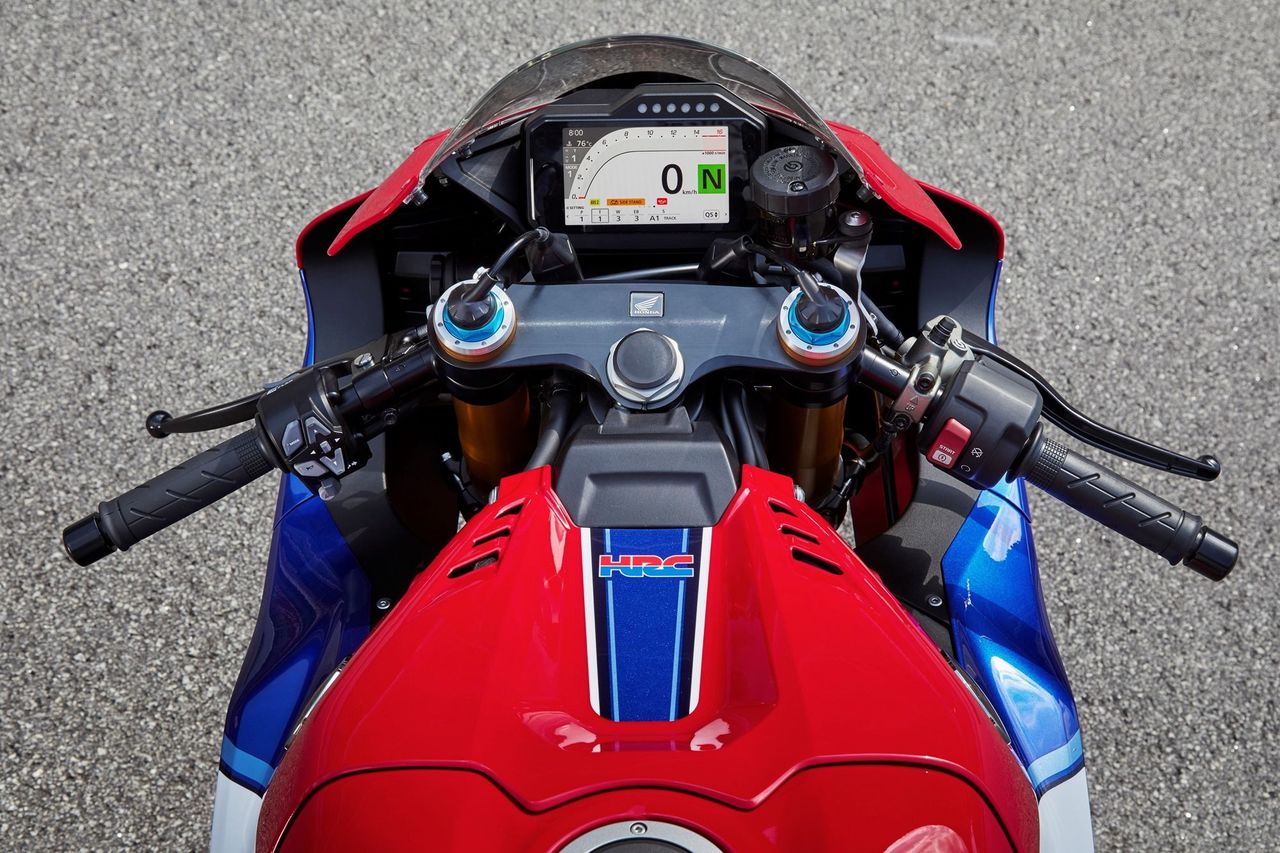
Honda CBR1000RR-R Fireblade Specifications
Displacement : 1000 cc
Engine Type : Liquid-cooled 4-stroke 16-valve DOHC Inline-4
No. of Cylinders : 4
Max Power : 217.5 PS @ 14500 rpm
Max Torque : 113 Nm @ 12500 rpm
Front Brake : Disc
Rear Brake : Disc
Fuel Capacity : 16.1 L
Gear Box : 6 Speed Manual
Body Type : Super Bikes, Sports Bikes
Honda CBR1000RR-R Fireblade Features
ABS Dual Channel
Riding Modes
Quick Shifter
LED Tail Light
Speedometer Digital
Odometer Digital
Tripmeter Digital
Tachometer Digital
Honda CBR1000RR-R Fireblade Dimensions and Capacity
Length 2100 mm
Width 745 mm
Height 1140 mm
Fuel Capacity 16.1 L
Saddle Height 830 mm
Ground Clearance 115 mm
Wheelbase 1455 mm
Kerb Weight 201 kg
Engine Oil 4 L
